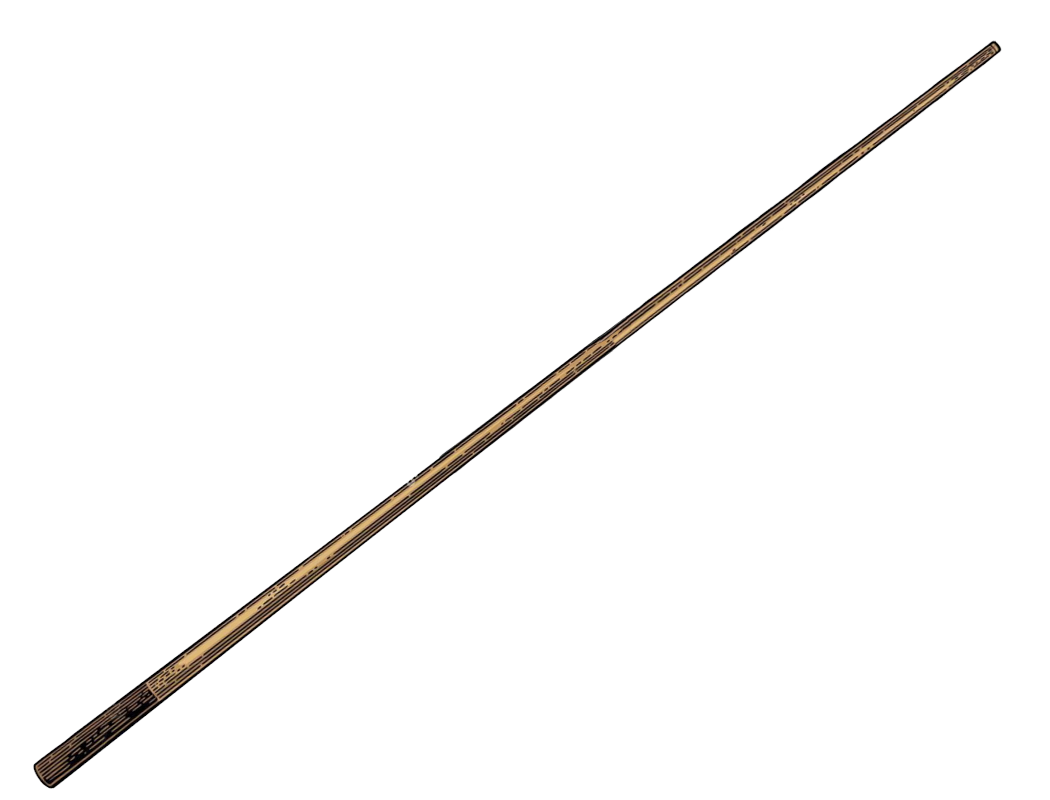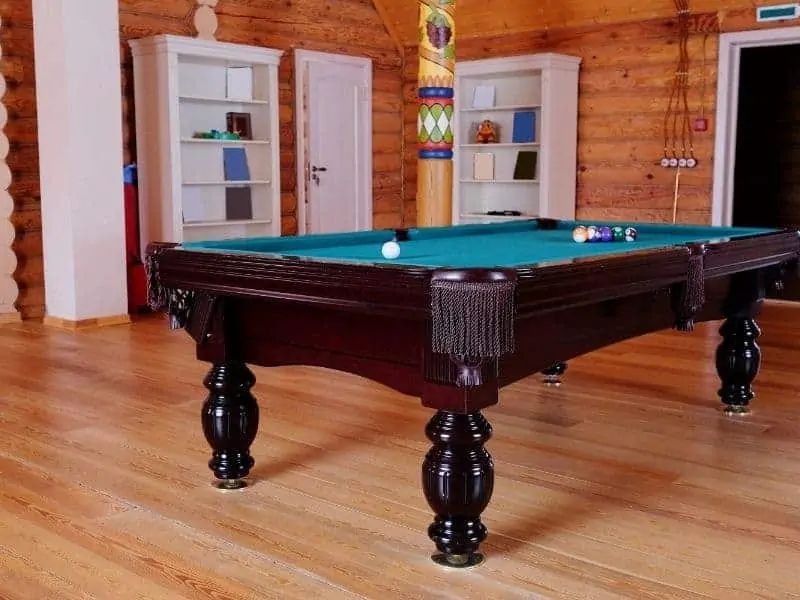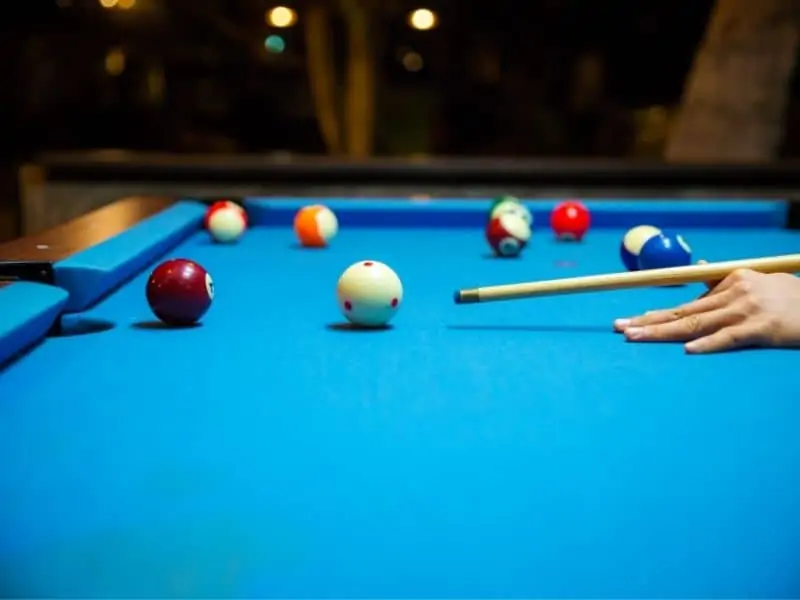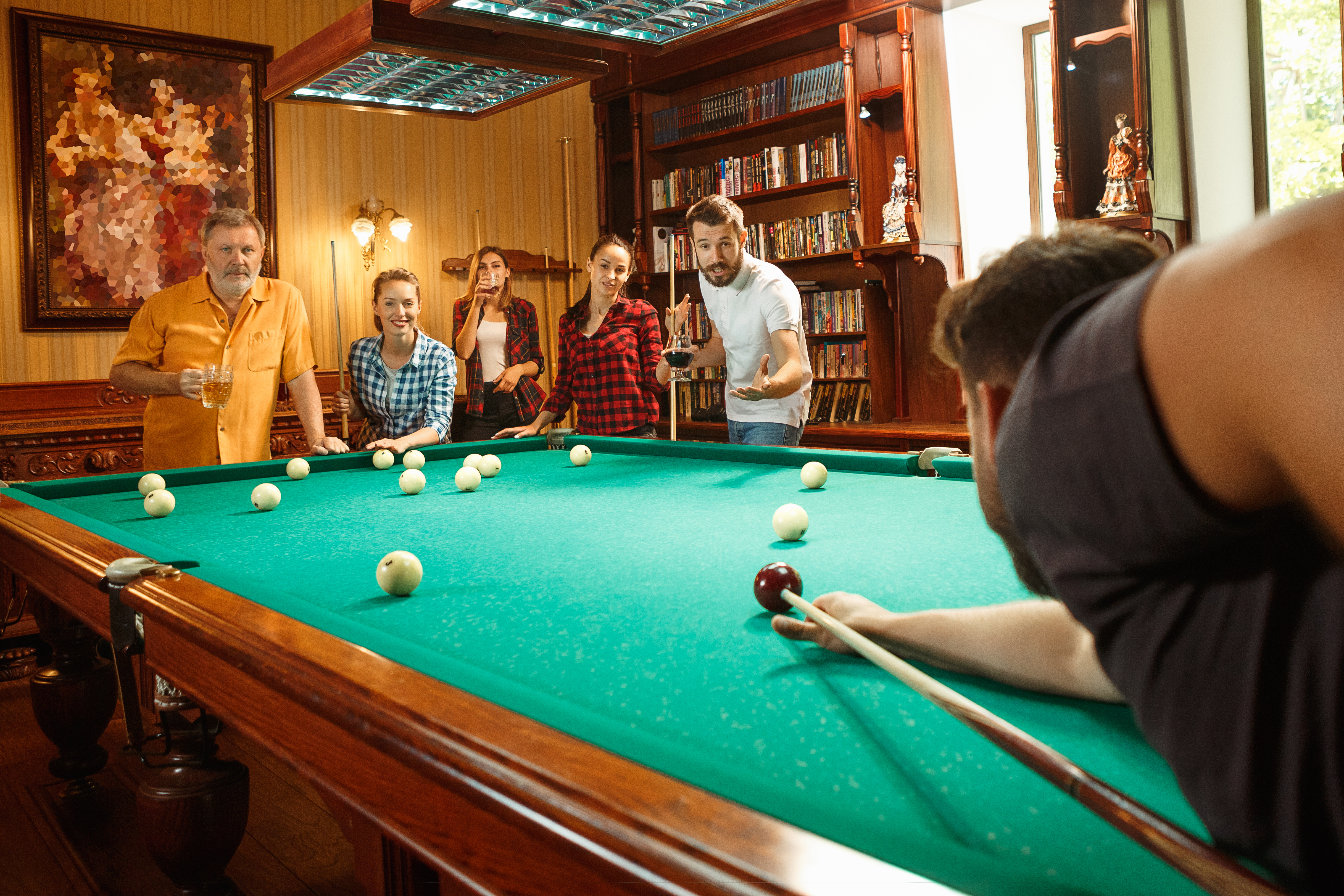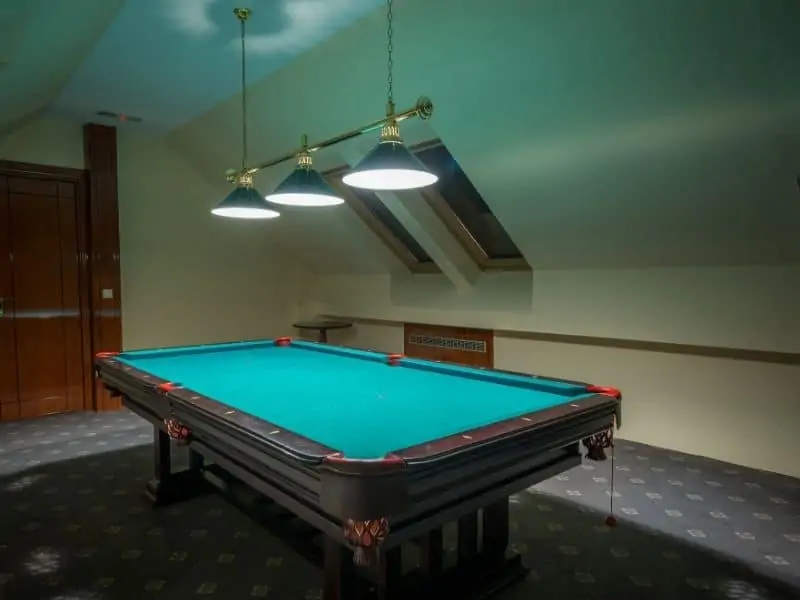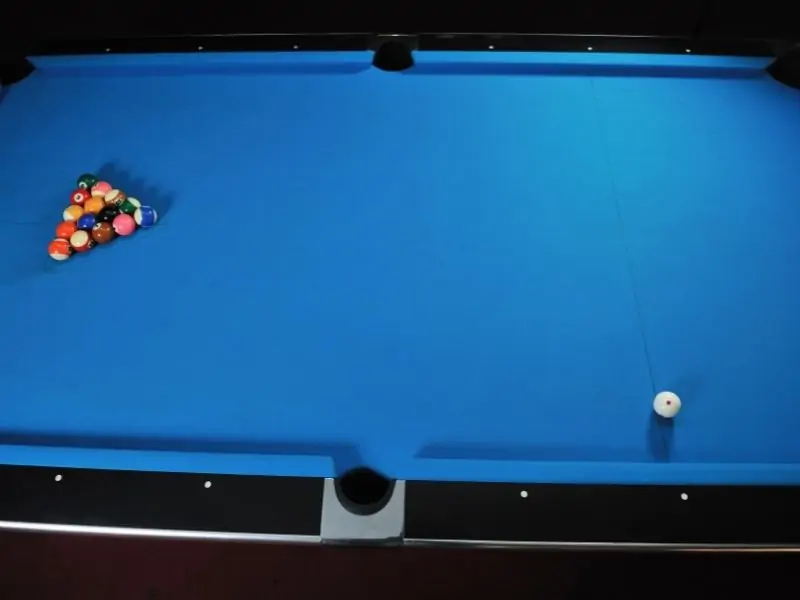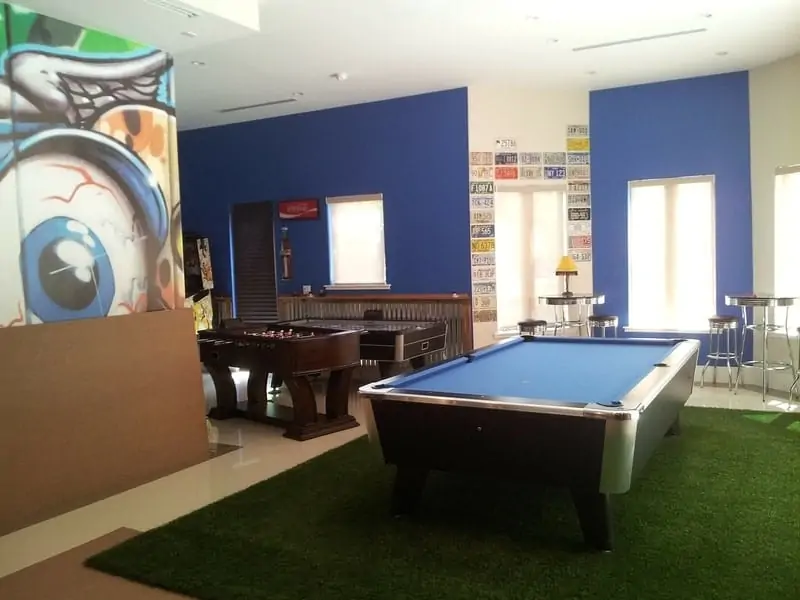Having a pool table in your home is a dream come true for most pool enthusiasts. But what if the only place you have for it is in the upstairs of your home? Will the second floor support it?
Obviously, pool tables are heavy. But assuming your home was built to code and that the weight of the pool table doesn’t exceed the weight limit of your second floor, you can safely place a pool table upstairs. So unless you live in a really old home, the only problem you’ll have with putting a pool table on the second floor is getting it there.
Certainly there are other considerations to make when putting a pool table upstairs, such as navigating the steps! But with most pool tables for in home use weighing between 300-1000 pounds, there’s little need to worry if your second floor will support it.
Throughout the rest of this article we’ll discuss how we know this to be true, and give you some tips on how to get your pool table upstairs!
How Much Weight Will the Second Floor of Your House Hold?
First, let’s talk about your home and how much weight the second floor can hold. Simply put, the second floor of a house will typically support at least 30 pounds per square foot of space. That number can go up as high as 50 pounds per square foot, depending on the structure.
These numbers will vary depending upon the regulations set by your local government. Typically, however, they’ll require a 30-pound per square foot rating for bedrooms, 40 pounds for general spaces, and a 50-pound per square foot rating for office spaces.
This means that if you have a 10×10 room with a 30 pound per square foot weight limit, the total amount of weight that should be placed in the room is 3000 pounds. We get this number by taking the total square footage of the room and multiplying it by the pound per square foot weight limit of your second floor.
In this scenario, as long as your pool table doesn’t exceed 3000 pounds, you’re good to go. Of course, these figures are generally conservative but shouldn’t be exceeded by too much without consulting an expert.
How Much Does a Pool Table Weigh?
Pool tables generally fall into two categories: slate and mdf. Slate pool tables generally weigh around 650-1000 pounds while MDF pool tables weigh in around 100-300 pounds.
Because a slate bed is much heavier than one made from MDF, the components used to construct the table itself have to be much stronger to support the extra weight. MDF on the other hand, is a wood based product and is significantly lighter.
Both styles of pool tables, however, fall well under the weight limits of most second story floors.
Related Article:How Much Does a Pool Table Weigh? Slate vs Wood (MDF)
Can My Floor Support a Pool Table?
As long as your home was built to code and the table doesn’t exceed that maximum load, yes, your floor will support a pool table.
If you want to find out the precise weight capacity for the second floor of your household, you’ll need to use the calculation shown above. Of course, to find the pound per square foot limits for your home you’ll probably need to see the original blueprints. Alternatively, you could search for the regulations set by your local government.
Should You Put a Pool Table on the Second Floor?
There’s really no reason why you shouldn’t put a pool table on the second floor as long as your floor supports it and you can get it there safely. However, there are a few other questions you should consider prior to moving your table upstairs.
Was My House Built to Code?
Remember: the maximum load of a household’s upper floor depends on local regulations. You may have done the math and figured out that your floor should be able to support the added weight of a pool table.
But was your home built to comply with those regulations in the first place? Some older homes may not comply with current codes, and might not be able to handle as much added weight as newer houses.
What is the Maximum all-in Weight?
The pool table shouldn’t be the only thing that you factor into your calculations. Even if it fits within your floor’s load limit, what about any other furniture you may also have around it? When calculating how much weight your floor will hold, always take into account things like couches, TVs, fridges, and other bulky items.
You should also ask yourself if you plan on hosting large gatherings quite often. People may not weigh as much as pool tables or fridges, but large numbers of them will still add more burden to your floor.
Will Your Pool Table Fall Through the Floor?
No, your pool table will not fall through the floor. As long as your house was built according to local regulations and your table weighs less than the maximum load of the floor, then you have nothing to worry about.
However, if you’re still feeling unsure about it, you could always take added precautions. For example, you could reinforce your floors to minimize any movements and give yourself the added peace of mind.
Regardless, stories of pool tables falling through floors are rare, if they ever happen at all.
Considerations for Noise and Vibration
When contemplating the placement of a pool table on the second floor, an often overlooked factor is the potential noise and vibrations that the game can generate. While a sturdy second floor should be more than capable of supporting the weight of a pool table, here are some additional considerations that are worthwhile:
Noise Transmission
Impact Noise: The sound of balls colliding and dropping into pockets can be surprisingly loud, especially in a quiet house. This noise can easily travel through the floor to rooms below, which may be disruptive especially if the room underneath is a bedroom or a space where people often seek quiet.
Foot Traffic: The movement of players around the table, especially during an enthusiastic game, can also create noise that may be transmitted to the floor below.
Vibration Concerns
Floor Vibrations: The impact of balls, especially during a break shot, can cause noticeable vibrations. While these are generally harmless, they might be felt in rooms below the game space.
Potential for Floor Damage: Consistent vibrations and impacts over time might potentially lead to minor wear and tear on the floor, though this is generally a low risk if the home is well-built.
Mitigation Strategies
If noise and vibrations are a concern, consider these strategies:
Insulation: Adding a layer of soundproofing insulation between the floors can help to dampen the noise. Acoustic underlayments, available in various materials like foam, rubber, or cork, are designed specifically for this purpose and can be effective.
Area Rugs or Mats: Placing a large area rug or a protective mat under the pool table can help to absorb some of the impact noise and vibrations.
Room Selection: If possible, choose a room that is not directly above a bedroom or a quiet living space. For example, placing the pool table above a garage or a less-frequently used room can help to minimize the disturbance to other people in the house.
Playing Schedule: Consider setting reasonable hours for playing pool, avoiding late night or early morning games when others in the house might be sleeping or seeking quiet time.
Consult a Professional: If noise and vibrations are a significant concern, it might be worth consulting with a professional. They can assess the structure of your home and recommend effective solutions, which might include structural reinforcements or advanced soundproofing techniques.
How to Move a Pool Table Upstairs
To move a pool table upstairs, you’ll need to first check and clear the route, then disassemble the pool table. After moving each part to its new location, you’ll need to reassemble the pool table there.
Moving a pool table upstairs can be quite tricky. A few of the factors that make it so challenging include:
- The weight of the pool table.
- The accessibility in your home.
- The number of people required to move it
Here are the necessary steps you’ll follow to move a pool table upstairs:
Clear the Space and Route
Here’s a common mistake that people make when moving items between floors: they forget to clear out the space and the route. This can present you with problems later on!
You see, not only is it frustrating to move something large like a pool table through an unclear route upstairs, but it can also be quite dangerous. Imagine tripping over toys or shoes while you’re carrying something big, heavy, andexpensive like a pool table!
So before you do anything else, make sure you clear out every step of the way from where the pool table is, all the way to the new space that it will soon occupy. When you’re lifting the heavy table upstairs, you’ll be glad you did!
Measure the Table and Route
Next, you’ll want to measure your pool table as well as the route and any turns along the way. This step is important because it’ll let you know whether or not your table will fit up the stairs and around any corners.
If there are any parts of the route that are too narrow for the pool table, you’ll know it ahead of time. Then, you can try your best to plan around it.
That’s much better than getting stuck halfway!
Disassemble the Table
Once everything is good to go then you can start disassembling the table. Generally, pool tables will break down into three parts:
- The cabinet
- The slate
- The legs
If possible, be sure to refer to the instruction manual on how to disassemble and reassemble the table safely.
Move the Parts Upstairs
This stage is the part of the process where you need the most amount of help possible. With more people, moving the slate and the cabinet will be much easier to do. As for the legs, well, a single person should be able to move those.
Just moving your pool table a few few? Click here for our guide.
Reassemble the Table
With all of the parts at its new location, you can begin reassembling the pool table. Remember, different manufacturers build their pool tables in different ways, so it’s best to follow their instructions on how to put the table back together again.
Inspect Everything
Once your pool table is back in one piece, you’ll want to double-check that everything is in good shape. You can use a level to see if the table is perfectly flat, and that there isn’t any movement in the floor.
Of course, the best way to test the table is to play a round of pool with the people who helped you move it!
When to Call in the Experts

Call in the experts for professional help if you lack the manpower or knowledge to move the pool table yourself.
Calling for professional help can be costly, which is why most people avoid doing it. However, there are some situations where getting in the experts would be the best thing to do.
If, for example, you don’t know whether or not your house was built to code and can sustain a pool table, you could hire a structural engineer. They’ll have the knowledge and tools to inspect your second floor and help you figure out if it’ll hold a pool table safely and comfortably.
On the other hand, you may also want to hire experts to move the pool table for you. Professional movers will have the tools, expertise, and manpower to move that pool table for you quickly and safely.
Accessibility and Future Resale Value
When considering placing a pool table on the second floor of your home, it’s also worth examining the impact of such a decision on both accessibility and the future resale value of your property. Below are some important considerations:
Accessibility Concerns
Ease of Use: Consider who will be using the pool table. Is it easy for them to access the second floor, especially for older family members or guests with mobility issues? Placing a pool table on the main floor might make it more accessible for everyone.
Emergency Exit: In the unlikely event of an emergency, such as a fire, having a substantial piece of furniture like a pool table could potentially obstruct or complicate escape routes. Ensure that this is not the case in your layout.
Moving Challenges: If you plan to move in the future, or even just rearrange your living spaces, consider the effort it will take to move the pool table again. They are bulky and heavy, making them challenging to move, especially down stairs.
Impact on Resale Value
Appeal to Buyers: A second-floor game room can be a unique selling point that might appeal to certain buyers, potentially increasing the resale value of your home. On the other hand, some buyers might view it as a nuisance, considering the noise and potential moving challenges.
Flexibility of Space: Buyers often look for homes with flexible spaces that they can tailor to their needs. A large pool table on the second floor may make a space appear less versatile, as prospective buyers might struggle to envision the room serving a different purpose (e.g., as a bedroom or office).
Perceived Wear and Tear: Future buyers might have concerns about the structural integrity of the second floor due to the prolonged presence of a heavy object like a pool table. Even if these concerns are unfounded, perception can significantly influence buying decisions.
Home Inspection: When selling your home, the buyer’s home inspector will thoroughly examine the house, including the structural integrity of the floors. Having had a heavy pool table on the second floor shouldn’t be an issue if your home was built to code, but it may still be a point of discussion during the selling process.
Strategies for Positive Impact
If you are considering the long-term impact of placing a pool table on the second floor, here are some strategies that may help:
Documentation: Keep documentation showing that your home was built to code and can support the weight of a pool table. This might include blueprints, inspection reports, or a statement from a structural engineer.
Design for Multipurpose Use: Consider designing the room in such a way that it is clear it can serve multiple functions. For example, include a seating area and bookshelves, showcasing that it can easily be converted into a reading room or office.
Consult a Real Estate Professional: Before making a significant change to your home, consider consulting with a real estate professional. They can offer insights into how the decision might impact your home’s resale value based on local market trends and buyer preferences.
Bottom line
No, pool tables are not too heavy for the second floor of your household. And yes, you can safely relocate your pool table to a higher floor.
As long as your home is structurally sound, built to code, and the pool table’s weight is within the safe limits of your second floor, your dream of having a pool game room upstairs can be realized safely and responsibly. But always remember, when in doubt, consult with a professional.
Your home is not just a building; it’s where life happens. Make decisions that enhance your enjoyment of the space, while also safeguarding its integrity and value for years to come.
Other Articles You May Be Interested In:
- Best Pool Cues for the Money: Discover the top pool cues that offer great value without breaking the bank.
- Pool Table in the Garage? Here’s What You Need to Know: Understand the essential considerations for setting up a pool table in your garage.
- Break Cue vs Playing Cue: What’s the Difference?: Learn the key differences between break cues and playing cues to enhance your game.
- How Much Does a Good Pool Cue Cost?: Explore the factors that determine the cost of a high-quality pool cue.
- Are Mini Pool Tables Worth It? A Complete Guide: Read our comprehensive guide on mini pool tables and decide if they’re the right fit for you.

